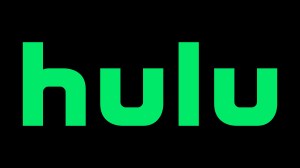Visual effects guru Dennis Berardi has been working with Monster Hunter director Paul W.S. Anderson for a long time. Of course, given that Anderson’s wife is Milla Jovovich, who starred in the Resident Evil movies as well as Monster Hunter for the filmmaker, it seems like he builds up some pretty strong bonds in the course of making his movies. Having the same VFX supervisor on numerous projects helps Anderson to have a distinct visual style that is simultaneously broad enough that the movies don’t all feel the same and focused enough that what they’re aiming to do is instantly recognizable.
Videos by ComicBook.com
Visual effects drive Monster Hunter in a way even more profound than they have in the prior, effects-heavy collaborations between Berardi and Anderson. After all, Monster Hunter doesn’t really work if the monsters don’t work.
“We’ve done a lot of movies together, Paul and I — I think we’re on our 10th movie over the last 20 years — and the process is, I would say, from first principles starting with the script and trying to understand the vision,” Berardi told ComicBook during a recent interview in support of the film’s home release. “In most cases, Paul will have written a script, as in this case, when he wrote the screenplay for Monster Hunter. We had some original IP to draw from, obviously, the Monster Hunter video games. And he first introduced me to Monster Hunter probably over 10 years ago when we were doing another movie and introduced me to the creatures. And then I did my own research and explored the video game on my own, really with my kids, and learned a lot about it.”
Visual effects is a complicated field, and the best of the best are experts in things that most people don’t understand. According to Berardi, though, the key to his working relationship with Anderson is asking the right question, and understanding how he can facilitate the director’s vision and occasionally take a complicated problem off Anderson’s plate.
“In terms of working with Paul, I ask a lot of questions,” Berardi explained. “What do you see for this moment? What do you see for that moment? What’s the point of this? What’s the point of that? What are we trying to achieve? And really try and get a sense of his vision because ultimately then I have to carry that vision out, in my case, to four or 500 animators, and make sure we’re serving the vision. So I try and become an expert in the content. I try and advocate for story, for his vision. Intertwined with all of that is he’s a very visual director, very strongly visual director, has very specific approach on framing, on lighting, on action, on blocking, on everything. He’s very visual. So probably step one is understanding the vision, and then step two is getting into the visual landscape of the film. And then step three is methodology. You don’t want to put the cart before the horse. And what I’m very worried about, and not just with Paul, is all of a sudden, you start to put them into a bit of a box, technologically, or we can’t do this and we can’t do that. And, and I tend to be in the ‘yes’ business. I want to try and help realize a vision and it’s my job to take that on board and not make it Paul’s job or a director’s job to worry about how we’re going to do something, necessarily.”
Monster Hunter is available to buy on digital platforms now. The movie is set to release for digital rental, as well as on DVD, Blu-ray, and 4K on Tuesday, March 2.








